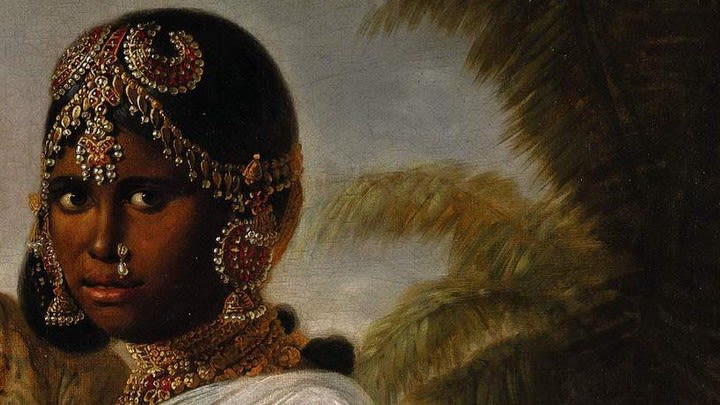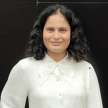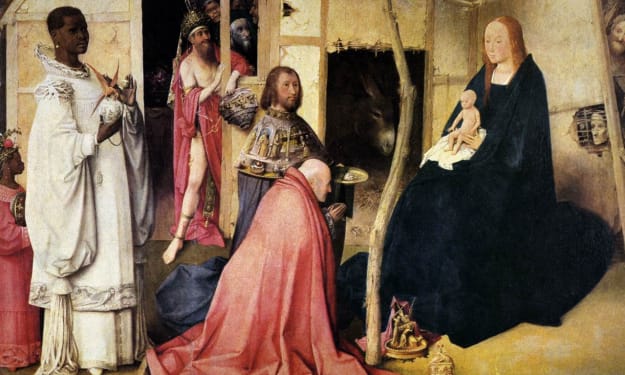The Indian Royal Queens Who Promoted the World's First Vaccine
A fascinating tale of three women in Thomas Hickey's 19th-century portrait

India witnessed a catastrophic outbreak of COVID-19 cases in the second wave. While the government received a lot of flak for dealing with the whole crisis, a 19th-century portrait of three women went viral as "one of the most important paintings in the history of medicine in India."
Who were these three women and how did they help in promoting one of the world's first immunization campaigns?
History of smallpox and world's first vaccine in India
At the onset of the 19th century, smallpox infections were very high in India. Pustules broke out across the face and body and fatalities were common. Even those who survived were scarred for life. For a very long time, this disease was cured by variolation (a method of inoculation used to immunize individuals against smallpox with material taken from the patient) accompanied by religious rituals of Hindus.
On the other side, the East India Company was willing to expand its footprint all over India and they sensed it as a political opportunity to battle against this deadly disease.
Although the world's first vaccine created by Dr. Edward Jenner arrived in India, people were hesitant to accept medicine and variolators knew that their livelihood was threatened.
But the British did not give up. They involved British surgeons, Indian vaccinators, and friendly royals to promote their campaign. On 14 June 1802, Anna Dusthall became the first person in India to be successfully vaccinated against smallpox.
How the royal family helped the British to promote vaccination?
The Kingdom of Mysore in the south of India was going through political turmoil. In 1799, the East India Company defeated one of its biggest enemies, Tipu Sultan, and after 30 years, the power again came into the hands of the Wadiyar Kingdom. Krishnaraja Wadiyar III took the throne when he was 12 years of age and married Devajammani.
As the British helped the Wadiyar family to restore their power, the royal kingdom paid off their favor by helping them in their vaccination campaigns and educating the rural population.
Who were the three women in the painting?

When this painting was auctioned by Sotheby in 2007, little did they know about the subjects of the artwork. They thought the subjects to be dancers or courtesans until Dr. Nigel Chancellor, a historian at Cambridge University intervened.
He identified the woman on the right of the painting to be Devajammani. The slight discoloration under her nose was the mild exposure to the smallpox virus. She appears to be gesturing towards her upper left arm that has been inoculated.
The woman on the left was believed to be the king's (Krishnaraja Wadiyar III) first wife, also named, Devajammani. And the woman in the center was believed to be the king's grandmother, Lakshmi Ammani, who lost her husband to smallpox. She might have approved the royal queens to get vaccinated and be the muse for Irish-born painter Thomas Hickey.
Dr. Chancellor says the painting was possible because Lakshmi Ammani was in charge - the king was too young to object and the queens were too young to refuse.
Further, Dr. Chancellor affirmed his theory by noticing the heavy gold sleeve bangles and exquisite headdresses were characteristic of Wadiyar queens. Also, the artist Thomas Hickey had painted several paintings of the members of the court.
Last thoughts
The vaccination campaign continued and more people understood the benefits of getting inoculated and switching over from variolation to vaccination. According to historian Professor Michael Bennett, more than a million people were vaccinated in India by 1807.
Eventually, the painting disappeared and came into the spotlight only in 1991 when Dr. Chancellor spotted it at an exhibition and acknowledged the royal women who were actually pioneers for the world's first immunization campaigns.
Undoubtedly, this painting holds a special significance in the vaccination history of India. We can't allow questions of science, medicine, and public health to become captives of tribalized politics. Today, more than ever, we need to vigorously trust science.
The painting gives hope that with political support and public participation, no challenge is too big. I hope we all come out of the darkness soon and collectively emerge as a better-prepared society for future challenges.
References-
1. The Indian queens who modelled for the world's first vaccine
2. Long View: An Indian Queen's "Vaccine Selfie" in Oil
Check my Youtube channel for interesting videos on art history.
About the Creator
Kamna Kirti
Art enthusiast. I engage with art at a deep level. I also share insights about entrepreneurship, founders & nascent technologies.
https://linktr.ee/kamnakirti
Enjoyed the story? Support the Creator.
Subscribe for free to receive all their stories in your feed. You could also pledge your support or give them a one-off tip, letting them know you appreciate their work.






Comments
There are no comments for this story
Be the first to respond and start the conversation.